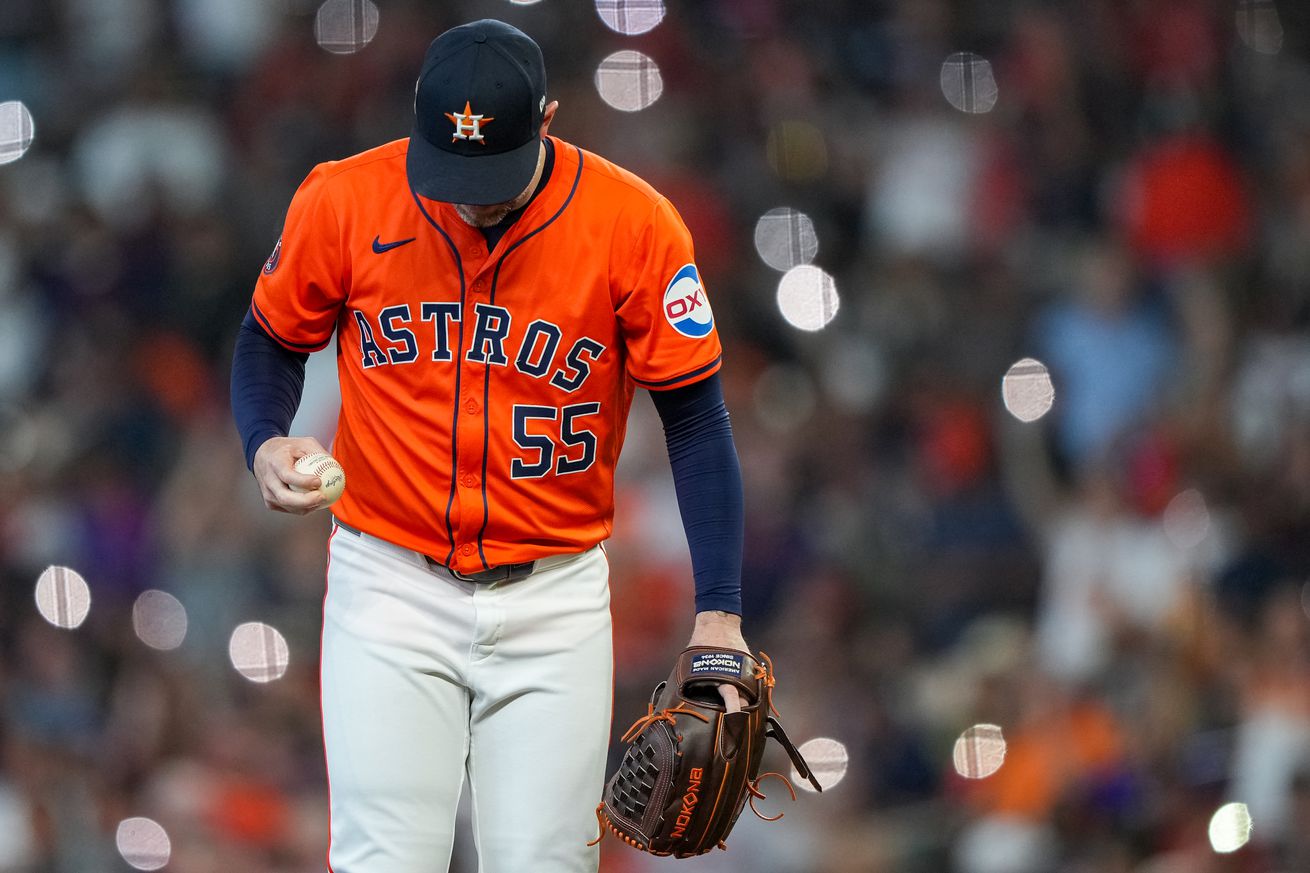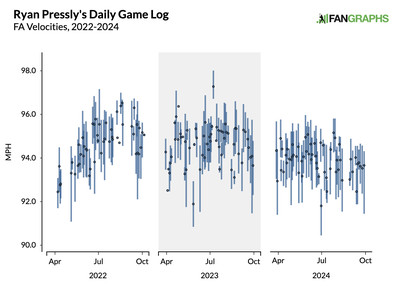
As Chandler Rome of The Athletic reported ($) earlier this week, the Astros’ organization has been having “internal discussions” about trading Ryan Pressly. For as much as we talk about the tenures of Jose Altuve and Alex Bregman in Houston, Pressly has become a fixture in his own right, first acquired by the club in 2018 and becoming a stalwart in the bullpen ever since. Any chatter about trading someone so closely associated with this era of success is a bit jarring at first glance. But trade at this juncture does make sense, considering the circumstances.
One apparent reason for trading Pressly and his $14 million salary for next season is simply due to the club’s budget. It isn’t a secret that the Astros are already pushing close to the first tax threshold of $241 million for 2025. Cot’s Baseball Contracts, for example, estimates slightly over $231 million in payroll obligations next year, including projected raises in arbitration at the start of the offseason before various roster moves. Even with José Urquidy and Penn Murfee no longer on the roster, saving a projected $4.55 million, the Astros still don’t figure to have much room left in the budget to add to the roster if Jim Crane wishes to avoid a second consecutive season of paying the CB tax. Frankly, even if re-signing Alex Bregman is an intense desire, that projected $14 million of space under the first threshold would be lucky to cover half of his potential AAV in his new contract.
Trading Pressly, however, would help somewhat alleviate payroll concerns. If the Astros find a willing trade partner to absorb the entirety of his 2025 salary, it would nearly double the space Dana Brown has to work with under the first tax threshold. Of course, it isn’t lost on anyone that a new contract for Bregman could eat away at that payroll space, leaving the Astros with possibly limited funds and multiple areas to address on the roster. There’s also the fact that Pressly has a no-trade clause in his contract, which could complicate matters. However, with Josh Hader under contract for $19 million in 2025 and Bryan Abreu due a raise in arbitration, it could benefit the club from a roster construction standpoint to reallocate those dollars from Pressly into other positions. If left unaltered, the Astros are projected to have the most expensive bullpen in baseball at $42.4 million among active rosters. Again, if Crane desires to avoid another tax with the escalators involved for exceeding it in consecutive seasons, or at least lessen it as much as possible, trimming down payroll from the bullpen would make the most sense.
From an on-field perspective, Pressly was perfectly serviceable again in 2024, although his numbers took a dip that does bear monitoring. We’ve now had back-to-back seasons with Pressly seeing his ERA hover in the mid-3.00 range, topping out at 3.58 ERA in 2023 before slightly regressing to 3.49 this year. His FIP and xFIP were an entire run or slightly higher than his marks in 2021 and 2022. Fastball velocity, whiffs, and strikeouts were down, with a walk rate inching a bit higher. He did suppress home runs a bit better last year, but he also experienced a bit more bad luck on batted balls, with a .300 or higher BABIP for the first time in a full season since 2018. Of course, a player’s BABIP can swing wildly from one season to the next, but the drop in velocity and subsequent strikeout decline should concern potential suitors.

No longer the closer in 2024 with Hader in tow, Pressly’s setup role with the Astros was an adjustment for everyone. While the results were typically acceptable, the overall performance felt increasingly, well, inconsistent. Regardless of role, a reliever with gradually declining velocity and whiff rates is a concern. His 26.9% whiff rate was his worst since 27% in 2017. Even pitch modeling was less enthusiastic than in recent seasons, with Stuff+ grading out to 124 compared to 156 in 2023. If Pressly remains with the organization through 2025, Abreu is likely the better option to serve in a setup role moving forward, although I doubt the organization will actually do that.
To be clear, I think Pressly would remain a net positive for the Astros, or any team, in 2025. While his future production may not entirely justify a $14 million salary, especially if his pitch quality continues to decline, he is a veteran reliever with tons of experience in various situations. That’s valuable in its own right. Alas, with the Astros also facing a potential payroll crunch, moving Pressly and reallocating those savings elsewhere would be prudent, not to mention any players coming back in a trade. Of course, it would help if those savings weren’t necessary if they didn’t already commit $31 million to players not on the roster, like José Abreu and Rafael Montero, but I don’t feel like relitigating those contracts today.